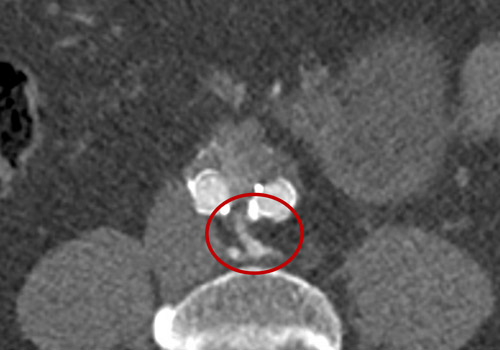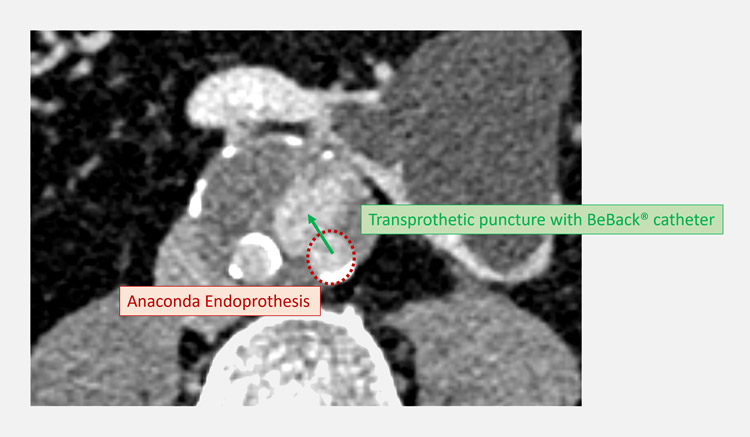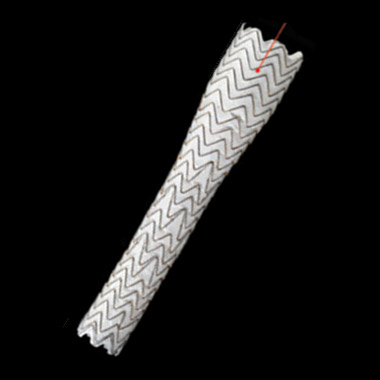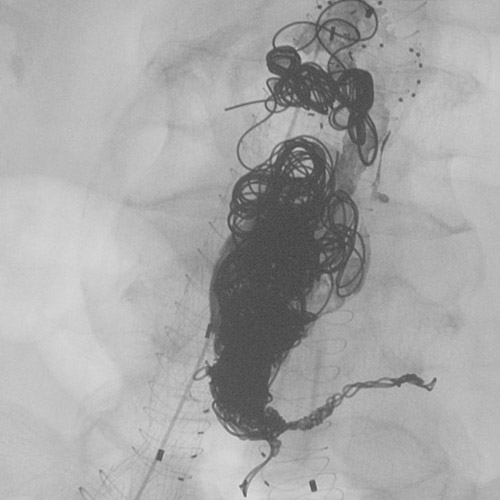Transprosthetic embolization
Would you be able to determine the most effective treatment plan for a 73-year-old patient whose aneurysm sac has enlarged after two years of stability post-endovascular repair of an abdominal aortic aneurysm? Examine this clinical case and contrast your treatment approach with that of your peers!
- The patient is a 73-year-old man
- He has a medical history of high blood pressure
- 2020: previous Anaconda EVAR (EndoVascular Aneurysm Repair) for AAA (Abdominal Aortic Aneurysm) 62 mm treatment
- 2020-2022: aneurysmal sac stability with type 2 endoleak ; AAA diameter 44 mm (vs 62 mm before surgery)
- Since February 2023, an enlargement of the aneurysm sac has been observed, at a rate of + 5 mm in one year.

- The chosen option is transgraft direct embolization
- To carry out this procedure, here is the list of required material:
- Steerable sheath 7 Fr
- Needle Catheter
- Stiff 0.018 guidewire
- Coils
- Glue
- Planned way and devices used:
- A transprosthetic puncture was performed using a BeBack® (Bentley) 360° rotating crossing catheter.
- A specific stiff 0.018 ThruwayTM guidewire (Boston Scientific) was also used.

Description of the BeBack® catheter with 0.018 distal needle, used (+/- with a 7 Fr steerable catheter) to puncture and perforate the graft in order to reach the liquid in-sac phase.
Beginning of the embolisation... It is necessary to fill until the liquid phase is complete.
21 coils later... The use of glue (Onyx™ liquid embolic system) is crucial to completely fill the liquid phase and stop the diffusion and circulation of blood.
The procedure should be completed by closing with a leg endoprosthesis (Gore® PLC161000).

Final result: lumbar arteries with liquid space completely coiled and filled with glue.

Follow-up
- It is crucial to carefully follow up the treated patient with a US duplex at 6 months and an AngioCT scan at 1 year, with maximum diameter and global volume determination and comparative evaluation.
- Advantages of this technical aspect:
- Direct access to the liquid phase and in-sac navigation to determine and reach the inflow and outflow arteries
- Selective inflow (+/- outflow) embolization + complete liquid space coiling and filling with large glue administration and diffusion.
Get the latest clinical cases and breaking news delivered straight to your inbox!

